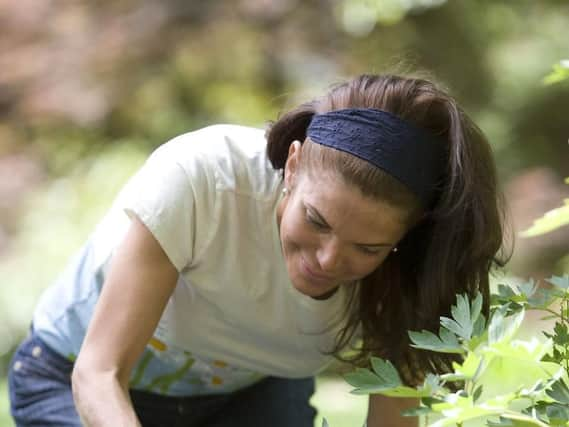Ten Tips for First Time Gardeners
This article contains affiliate links. We may earn a small commission on items purchased through this article, but that does not affect our editorial judgement.


The garden gurus from GardenBuildingsDirect.co.uk have created a simple list to help amateurs get their gardening off the ground and successfully grow and care for a variety of plants this spring and summer.
To a beginner, gardening can seem like some kind of rocket science. Whether you have acres of land at your disposal or just a few square metres to work with, it can be a daunting task to tackle largely due to the commitment and time you have to invest.
Advertisement
Hide AdAdvertisement
Hide AdBut novices needn’t be unnerved as these ten step-by-step tips will cover the basics and have you nursing a variety of plants, flowers and vegetables in no time.
A spokesperson for GardenBuildingsDirect.co.uk said: “Nobody does gardening quite like the Brits.
“As a nation, we spend thousands of pounds and hours of our lives getting our backyards looking spick and span – and for good reason!
“Not only does gardening produce rewarding results, it also gets you outside in the fresh air and helps to burn hundreds of calories too.
Advertisement
Hide AdAdvertisement
Hide Ad“Once you’ve armed yourself with the basic gardening tools like a spade, trowel, watering can and pruning scissors, simply follow our step-by-step guide and you’ll be nursing the garden of your dreams in no time!”
1. Plan ahead
Before you even consider heading out to buy new plants and equipment, first have a think about the bigger picture and how you’d eventually like your garden to look. There are some great gardening apps available that will help you plan your dream garden with ease.
When you have a strong idea and you have the bulbs, plants and seeds to hand, place them all on to the soil before planting them as you’ll be able to move them around until you’re happy with the arrangement. This is much easier than having to dig up and replant them afterwards!
2. Pick easy-to-grow plants
Although azaleas and orchids look and smell amazing, they’re notoriously difficult to grow, so are no good for a gardening novice.
Advertisement
Hide AdAdvertisement
Hide AdInstead, opt for plants and flowers that have a reputation for being easy to grow and care for.
Sweet peas, fuchsias, pansies and marigolds all look fantastic and come in a variety of colours and shapes, plus they’re reliable, low maintenance, and they grow quickly so you’ll be able to reap the rewards sooner!
3. Soak the roots
By thoroughly soaking the roots of a new plant before putting it in the soil, you’ll reduce the risk of getting dry root balls.
Also make sure that the hole is bigger than the root ball before you plant it, as a plant’s roots need to be able to spread to get the best chance of tapping into moisture and absorbing the soil’s natural nutrients.
4. Be gentle
Advertisement
Hide AdAdvertisement
Hide AdInstead of yanking plants from their pots by their stems, gently squeeze the sides of the pot and turn it upside-down, using your other hand to catch it as it slides out. Otherwise, you’re likely to break or bruise them.
5. Give plants space
It can be easy to get carried away by all of the amazing displays at your local garden centre and buy too many plants for the size of your bed or planter, but crowded plants are much more susceptible to disease and young plants often will not survive if placed too close together.
If they do manage to pull through, they’ll need more frequent watering and fertiliser too, so make sure you read each plant care label carefully to find out how much room they need.
6. Label, label, label
As a gardening rookie, it can be easy to forget exactly what you’ve planted and where as you might not be able to identify plants and flowers easily just from looking at them.
Advertisement
Hide AdAdvertisement
Hide AdTo avoid any confusion, take some time to write a plant label and pop it in the ground next to the seeds, bulbs or plants you’ve planted. Most plants you buy will come with a care label anyway but they can get quickly ruined being outdoors, so try copying out the information on to small strips of wood or lollipop sticks that you can stick in the ground instead.
7. Water, water, water
Make sure you give young plants plenty of water, but avoid getting the plant’s leaves wet! Wet leave can quickly lead to mould, rot and decay – which equate to one sick plant!
As your sprouts begin to grow, remember the general rule of thumb is to give plants an inch of water per week – but be on the lookout for yellow leave as that means too much water!
8. Trim and prune
Trimming and pruning your plants allows for increased air circulation and fewer leaves for you to spill water on.
Advertisement
Hide AdAdvertisement
Hide AdIt also keeps your plants and flower looking neat and pretty, instead of unkempt and bedraggled.
9. Beware of weeds
Weeds are a gardener’s worst enemy – so, make sure you get in to the habit of weeding regularly.
Remember to remove weeds along with their roots to reduce the chance of them re-growing, and if there are seeds clinging to the weeds, don’t put them in the compost heap. You’ll just end up re-seeding them when you spread the compost!
10. Set reminders
Set up a dedicated calendar so you’ll have an idea of when to complete general gardening tasks for each plant throughout the year.